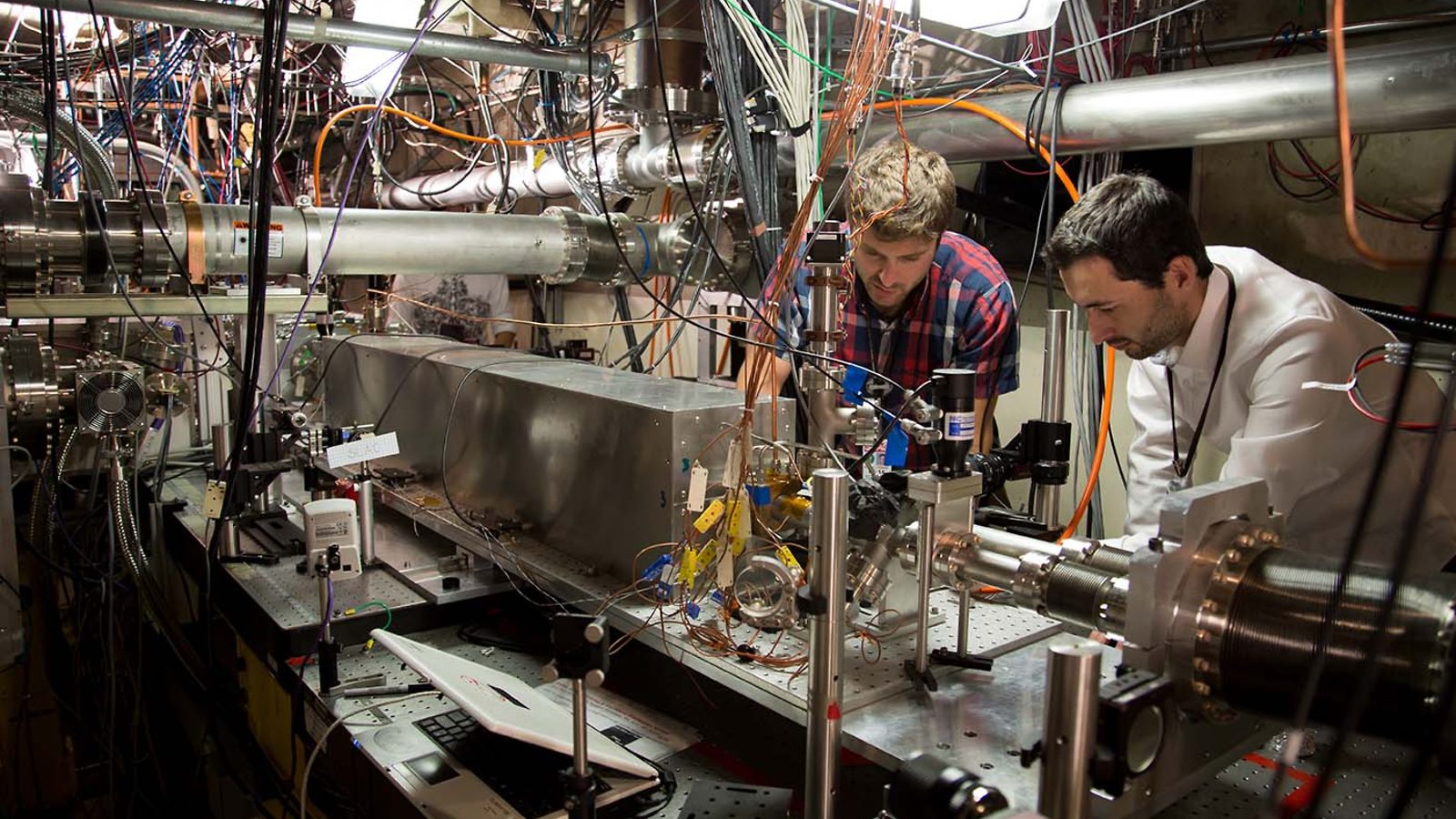Scientists have proven that a technique for accelerating particles on waves of plasma is efficient enough to power a new generation of shorter, more economical particle accelerators.
Using the Facility for Advanced Accelerator Experimental Tests (FACET) at SLAC National Accelerator Laboratory, scientists from SLAC and the University of California, Los Angeles, boosted bunches of electrons to energies 400 to 500 times higher than they could have reached traveling the same distance in a conventional accelerator. They were able to transfer energy to the electrons with an unprecedented level of efficiency.
Their results, described in Nature, could eventually lead to an expansion in the use of plasma wakefield acceleration in areas such as medicine, national security, industry and high-energy physics research.
“Many of the practical aspects of an accelerator are determined by how quickly the particles can be accelerated,” says SLAC accelerator physicist Mike Litos, lead author of the paper. “To put these results in context, we have now shown that we could use this technique to accelerate an electron beam to the same energies achieved in the 2-mile-long SLAC linear accelerator, in less than 20 feet.”
Plasma wakefields have been of interest to accelerator physicists for 35 years as one of the more promising ways to drive the smaller, cheaper accelerators of the future. The UCLA and SLAC groups have been at the forefront of research on plasma wakefield acceleration for more than a decade.
In this experiment, researchers sent pairs of electron bunches containing 5 billion to 6 billion electrons each into a laser-generated column of plasma inside an oven of hot lithium gas. The first bunch in each pair blasted all the free electrons away from the lithium atoms, leaving the positively charged lithium nuclei behind—a configuration known as the “blowout regime.” The blasted electrons then fell back in behind the second bunch of electrons, forming a “plasma wake” that propelled the trailing bunch to higher energy.
Previous experiments had demonstrated multi-bunch acceleration, but the team at SLAC was the first to reach the high energies of the blowout regime, where maximum energy gains at maximum efficiencies can be found. Of equal importance, the accelerated electrons wound up with a relatively small energy spread.
“These results have an additional significance beyond a successful experiment,” says Mark Hogan, SLAC accelerator physicist and one of the principal investigators of the experiment. It “has enabled us to increase the acceleration efficiency to a maximum of 50 percent—high enough to really show that plasma wakefield acceleration is a viable technology for future accelerators.”
The plasma source used in the experiment was developed by a team of scientists led by Chandrashekhar Joshi, director of the Neptune Facility for Advanced Accelerator Research at UCLA.
“It is gratifying to see that the UCLA-SLAC collaboration on plasma wakefield acceleration continues to solve seemingly intractable problems one by one through systematic experimental work,” Joshi says. “It is this kind of transformative research that attracts the best and the brightest students to this field, and it is imperative that they have facilities such as FACET to carry it out.”
There are more milestones ahead. Before plasma wakefield acceleration can be put to use, Hogan says, the trailing bunches must be shaped and spaced just right so all the electrons in a bunch receive exactly the same boost in energy, while maintaining the high overall quality of the electron beam.
“We have our work cut out for us,” Hogan says. “But you don’t get many chances to conduct research that you know in advance has the potential to be immensely rewarding, both scientifically and practically.”
Computer simulations used in the experiments were developed by Warren Mori’s group at UCLA. Additional contributors included researchers from SLAC, the University of Oslo in Norway, Tsinghua University in China and Max Planck Institute for Physics in Germany. The research was funded by the DOE Office of Science.
SLAC published a version of this article as a press release.



